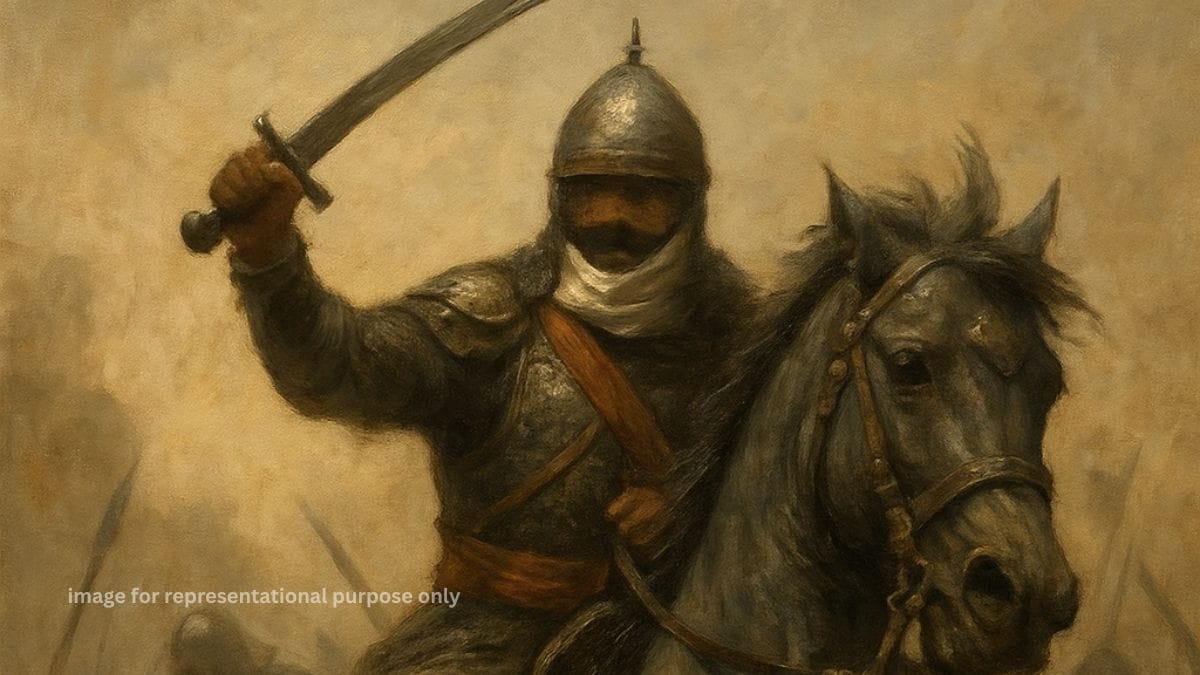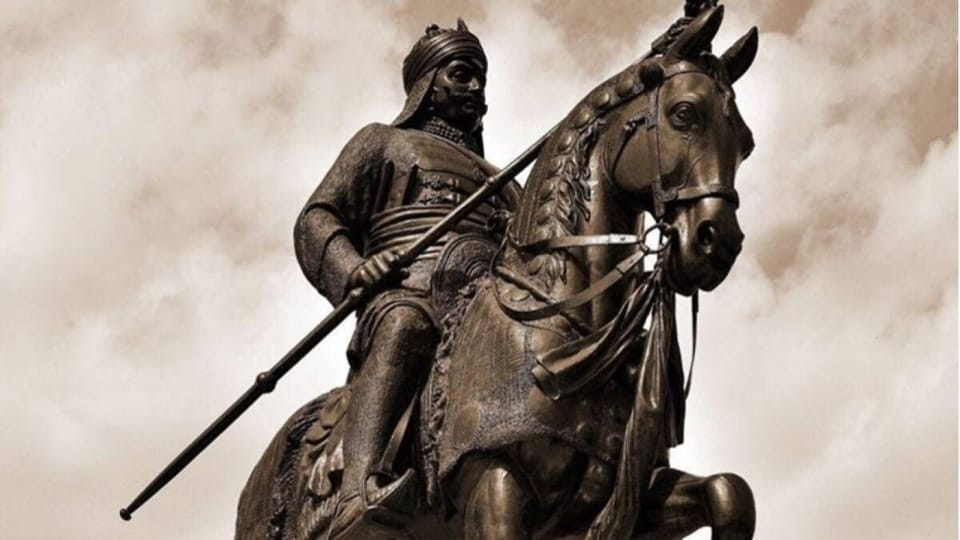Great kings of Rajasthan: Their wars and legacies

Rajasthan, the "Land of Kings," is synonymous with valor, chivalry, and a rich tapestry of royal heritage. The Rajput clans, who rose to prominence around the 7th century CE, forged a legacy of courage and sacrifice through their relentless defense of their homeland against invaders. This article delves into the lives of some of Rajasthan’s most illustrious kings, the wars they fought, and their enduring contributions to the region’s history and culture. From the Sisodias of Mewar to the Rathores of Marwar, these rulers exemplified the Rajput ethos of honor and resistance.
1. Bappa Rawal: The Founder of Mewar’s Glory
Bappa Rawal, born as Kalbhoj in the 8th century, is credited with founding the Mewar kingdom, which became a bastion of Rajput resistance. As the 8th ruler of the Guhila dynasty, he established Chittorgarh as his capital around 734 CE. His reign marked the beginning of Mewar’s prominence as a center of Hindu resistance against foreign invasions.
Wars Fought
Battle of Rajasthan (738 CE): Bappa Rawal played a pivotal role in the triple alliance of Indian kingdoms, alongside Gurjara-Pratihara king Nagabhata I and Rashtrakuta prince Avanijanashraya Pulakesi, to repel Arab invasions led by Emir Junaid. The Rajput forces, numbering 5,000–6,000, faced an Arab army of over 30,000. Bappa Rawal’s leadership led to the death of Junaid, forcing the Arabs to retreat to Sindh. This victory safeguarded northern India from Arab conquest for nearly two centuries.
Legacy
Bappa Rawal’s establishment of Mewar laid the foundation for its future rulers, such as Rana Sanga and Maharana Pratap. His devotion to Eklingji (a form of Lord Shiva) set a spiritual tone for Mewar’s rulers, who considered themselves custodians of Hindu dharma. The Chittorgarh Fort, strengthened during his reign, remains a symbol of Rajput resilience.
2. Prithviraj Chauhan: The Last Hindu Emperor of North India
Prithviraj Chauhan (c. 1166–1192 CE), a ruler of the Chauhan dynasty, controlled Ajmer and Delhi during the late 12th century. Known for his military prowess and romanticized in the epic Prithviraj Raso, he was a formidable warrior who sought to unify northern India under Hindu rule.
Wars Fought
First Battle of Tarain (1191 CE): Prithviraj decisively defeated Muhammad Ghori, the Ghurid sultan, near Tarain (modern-day Haryana). Ghori’s forces were routed, and he narrowly escaped. This victory showcased Prithviraj’s strategic brilliance and temporarily halted Muslim expansion into northern India.
Second Battle of Tarain (1192 CE): Ghori returned with a reinforced army, employing tactics like feigned retreats. Prithviraj was defeated and captured, marking the beginning of Muslim rule in northern India. His death, likely by execution, ended the Chauhan dynasty’s dominance.
Legacy
Prithviraj’s resistance against Ghori cemented his status as a legendary Rajput hero. His capital, Ajmer, became a cultural and political hub. The Prithviraj Raso, though partly fictional, immortalized his chivalry and romance with Samyukta, daughter of his rival Jaichand of Kannauj. His defeat at Tarain was a turning point, paving the way for the Delhi Sultanate.
3. Rana Kumbha: The Undefeated Warrior of Mewar
Rana Kumbha (r. 1433–1468 CE), also known as Kumbhakarna, was a Sisodia ruler of Mewar whose reign was marked by military triumphs and cultural patronage. Dubbed the “Hindu Sultan” for his dominance, he expanded Mewar’s territories and fortified its defenses.
Wars Fought
Siege of Nagaur (1456 CE): Rana Kumbha intervened in a succession dispute in Nagaur, defeating Shams Khan and later his brother Mujahid Khan. This victory weakened the Sultanate of Nagaur and expanded Mewar’s influence.
Battles against Malwa and Gujarat Sultanates: Rana Kumbha repelled multiple invasions by the combined forces of Malwa (under Mahmud Khilji) and Gujarat (under Ahmad Shah I). At the Battle of Sarangpur, he captured Mahmud Khilji, though he later released him. His defense of Mandsaur against Malik Ayaz’s massive army (100,000 cavalry and 100 war elephants) forced the invaders to retreat.
Battle of Mandalgarh and Banas: Kumbha’s continuous campaigns against neighboring sultanates ensured Mewar’s sovereignty, making him undefeated in battle.
Legacy
Rana Kumbha’s architectural contributions include the Kumbhalgarh Fort, a UNESCO World Heritage Site, and the Vijay Stambh (Tower of Victory) in Chittorgarh. A patron of arts, he authored works like Sangita-raja and Rasika-Priya. His 32 forts across Mewar fortified the kingdom, and his victories made Mewar the strongest Rajput state of his era.
4. Rana Sanga: The Lion of Mewar
Maharana Sangram Singh, popularly known as Rana Sanga (r. 1508–1528 CE), was a Sisodia ruler who united Rajput clans against the Mughal invader Babur. His body, scarred with over 80 wounds, bore testament to his relentless warrior spirit.
Wars Fought
Battle of Khatoli (1518 CE): Rana Sanga defeated Ibrahim Lodi, the Delhi Sultan, capturing territories and weakening the Lodi dynasty.
Battle of Dholpur (1519 CE): Sanga’s victory over Lodi further consolidated Mewar’s control over Malwa and brought him within striking distance of Delhi.
Battle of Khanwa (1527 CE): Leading a Rajput-Afghan confederacy, including vassals from Bundi, Jalore, and Mewat, Sanga faced Babur’s Mughal forces. Despite initial success, Babur’s use of gunpowder and cannons turned the tide. Sanga was wounded and evacuated by his commanders, Prithviraj Kachwaha and Maldev Rathore. He died in 1528, possibly poisoned by nobles wary of further conflict with Babur.
Legacy
Rana Sanga’s vision of a united Rajput front against foreign rule inspired future resistance. His expansion of Mewar’s borders from Mandu to Agra made it a dominant power. Babur himself praised Sanga as one of India’s strongest kings, alongside Krishnadevaraya of Vijayanagara. His grandson, Maharana Pratap, continued his legacy of defiance.
5. Maharana Pratap: The Symbol of Rajput Valor
Maharana Pratap (r. 1572–1597 CE), the iconic Sisodia ruler of Mewar, is celebrated for his unyielding resistance against Mughal emperor Akbar. His refusal to submit, even at great personal cost, made him a national hero.
Wars Fought
Battle of Haldighati (1576 CE): Pratap, with 3,000 cavalry and 400 Bhil archers, faced a Mughal army of 10,000 led by Raja Man Singh of Amber. Despite a valiant charge that nearly killed Man Singh, Pratap was outnumbered. His horse, Chetak, carried him to safety but died from wounds. The battle was tactically inconclusive, but Pratap’s resistance became legendary.
Battle of Dewair (1582 CE): Pratap’s forces defeated a Mughal army, reclaiming parts of Mewar. This victory marked a turning point, allowing him to regain control over much of his kingdom.
Guerrilla Warfare (1576–1597 CE): After Haldighati, Pratap adopted guerrilla tactics, operating from the Aravalli hills. He disrupted Mughal supply lines and recaptured territories, refusing to bow to Akbar.
Legacy
Maharana Pratap’s defiance against Akbar symbolized Rajput pride and self-respect. He banned Rajput-Mughal marriages, reinforcing his community’s identity. The monument to Chetak in Haldighati and the annual Maharana Pratap Jayanti celebrate his legacy. His reconquest of Mewar ensured its independence until 1614.
6. Rao Maldeo Rathore: The Most Potent Prince of Hindustan
Rao Maldeo Rathore (r. 1532–1562 CE) was a Rathore ruler of Marwar who filled the power vacuum left by Rana Sanga. Historian Ferishta called him the “most potent prince of Hindustan” for his military and political acumen.
Wars Fought
Battle of Sammel (1544 CE): Maldeo faced Sher Shah Suri, the Afghan ruler who ousted the Mughals. Despite early successes, betrayal by his generals led to a crushing defeat, with heavy Rajput losses. Maldeo escaped to the hills, later reclaiming Marwar.
Wars against Rajput Rivals: Maldeo’s aggressive campaigns against neighboring Rajput states, like Bikaner and Mewar, weakened the Rajput confederacy, indirectly aiding Mughal expansion under Akbar.
Legacy
Maldeo’s reign saw Marwar’s expansion and the fortification of Jodhpur. His strategic alliances and military campaigns, though controversial, showcased his ambition. His resistance against Sher Shah Suri preserved Marwar’s autonomy, and his descendants continued the Rathore legacy.
7. Raja Man Singh I: The Mughal-Rajput General
Raja Man Singh I (r. 1589–1614 CE), a Kachwaha ruler of Amber, was a trusted general of Akbar. His loyalty to the Mughals placed him at odds with fellow Rajputs, but his military achievements were unparalleled.
Wars Fought
Battle of Haldighati (1576 CE): Leading Akbar’s forces, Man Singh defeated Maharana Pratap, though Pratap escaped. His use of superior numbers and artillery secured a Mughal victory.
Campaigns in Kabul, Bengal, and Orissa: Man Singh fought 67 battles across the Mughal Empire, from Kabul to southern India, expanding Mughal territories and earning Akbar’s trust.
Legacy
Man Singh’s alliance with Akbar brought prosperity to Amber, evident in the grandeur of Amer Fort. His diplomatic skills bridged Rajput and Mughal interests, though his role in Haldighati made him a controversial figure among Rajputs. His architectural patronage, including temples and palaces, enriched Rajasthan’s heritage.
Cultural and Architectural Contributions
Beyond their military exploits, these kings left an indelible mark on Rajasthan’s culture:
Forts and Palaces: Kumbhalgarh, Chittorgarh, Amer, and Mehrangarh forts are architectural marvels, blending defense with aesthetics.
Literature and Arts: Rana Kumbha’s scholarly works and Pratap’s patronage of bards preserved Rajput traditions.
Religious Patronage: Temples like Eklingji and Ranakpur reflect the kings’ devotion to Hinduism and Jainism.
The great kings of Rajasthan—Bappa Rawal, Prithviraj Chauhan, Rana Kumbha, Rana Sanga, Maharana Pratap, Rao Maldeo Rathore, and Raja Man Singh I—shaped the region’s history through their courage, strategic brilliance, and cultural contributions. Their wars against Arabs, Turks, Afghans, and Mughals defined Rajasthan as a land of resistance. From the Battle of Rajasthan to Haldighati, their sacrifices ensured the survival of Rajput identity. Today, their forts, legends, and values continue to inspire, making Rajasthan a living testament to their enduring legacy.

